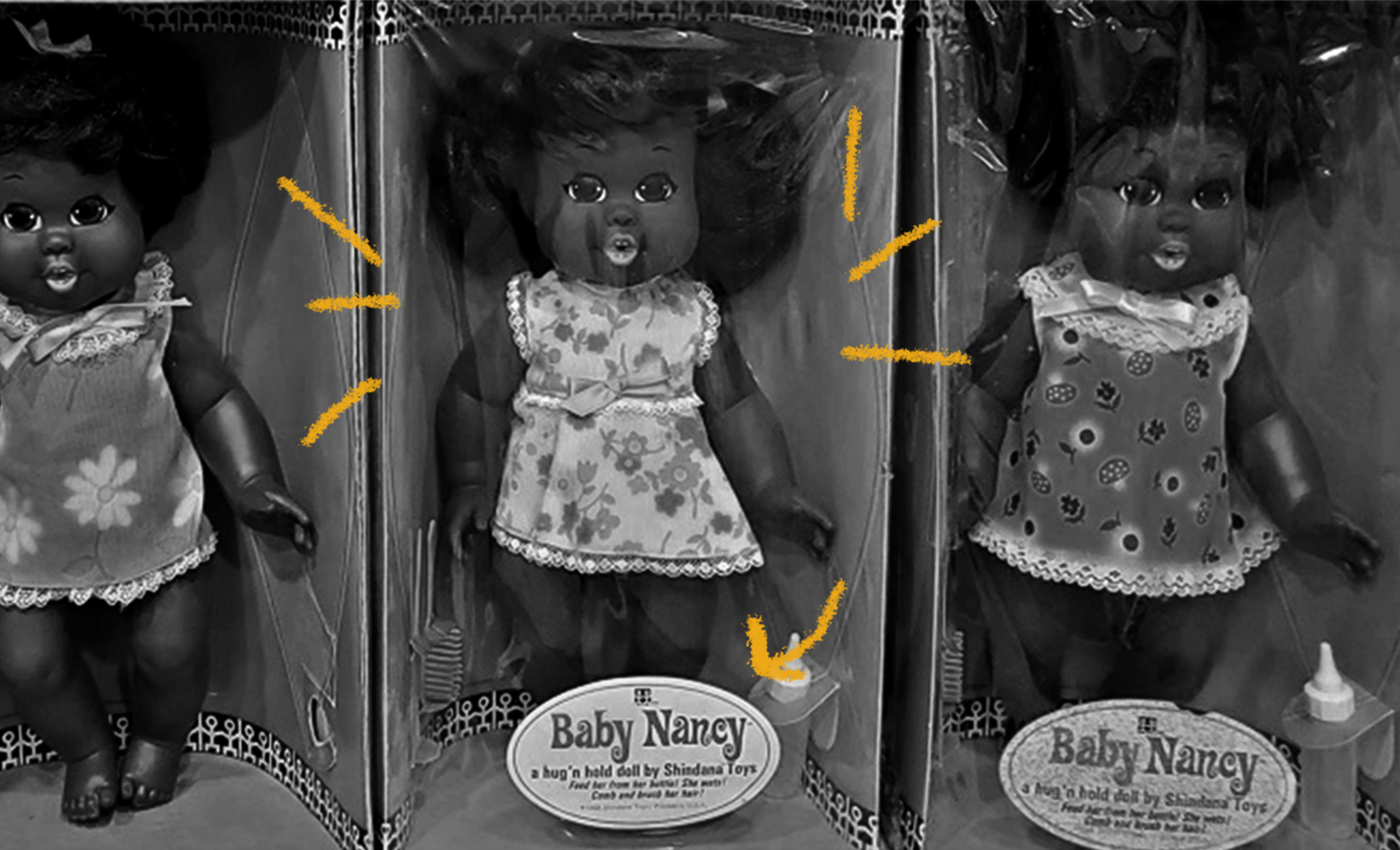After the Watts Riots in 1965, Louis S. Smith II and Robert Hall joined with civil rights activists and community members to form Operation Bootstrap. The organization’s goal was empowerment and social and economic equity. In 1968, they launched Shindana Toys, a community-owned company with a mission to make toys that “reflect Black pride, Black talent, and most of all, Black enterprise.” In its first year of operation, Shindana Toys produced Baby Nancy. Black sculptor Jim Toatley made the doll’s face mold, which he notably designed to retain Afrocentric features. By Thanksgiving that year, Baby Nancy had become the best-selling Black doll in Los Angeles, and as Christmas grew closer, production struggled to keep up with demand. Realizing how powerful Baby Nancy was and how much she filled a need in the community, Shindana began national distribution. Although the company ceased operations in 1983, Baby Nancy is remembered as a groundbreaking doll that grew out of the Civil Rights and Black Arts movements and made commercial and cultural breakthroughs nationally. And, of course, she is also fondly remembered as the treasured toy of the many children who played with her.

Your go-to guide for weird history facts
Subscribe to the FREE daily email that makes learning about history fun.


